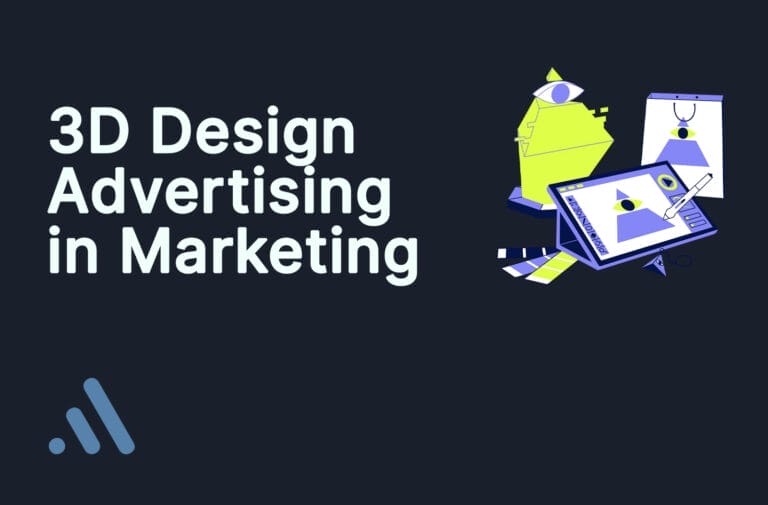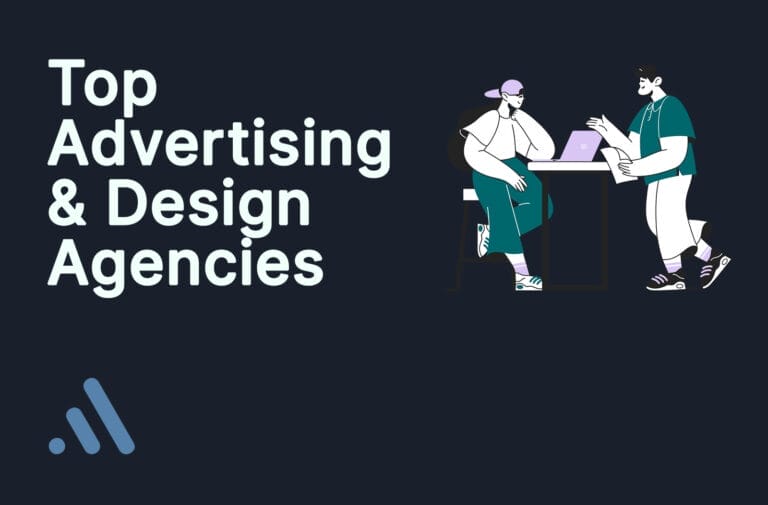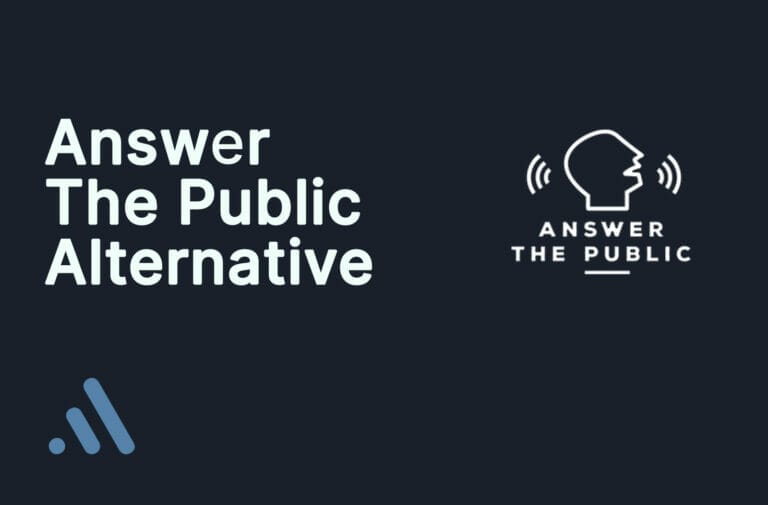Are you looking to create a marketing website design that stands out from the crowd and captures your target audience’s attention? In today’s digital landscape, having a well-designed website is crucial for the success of your marketing efforts. A great website not only showcases your brand’s personality but also guides visitors towards taking desired actions.
In this blog post, we’ll explore nine inspiring examples of marketing website design that effectively communicate their brand message and drive results. But first, let’s dive into why website design is so important for digital marketing success.
Why Website Design is Crucial for Digital Marketing Success
Your website is often the first touchpoint potential customers have with your brand. It’s where they learn about your products or services, engage with your content, and ultimately decide whether to do business with you. That’s why website design plays a critical role in your overall digital marketing strategy.
A well-designed website seamlessly integrates with your other marketing channels, such as social media, email campaigns, and paid advertising. It ensures a consistent brand experience across all touchpoints and guides visitors towards taking the desired actions, whether that’s making a purchase, signing up for a newsletter, or contacting your sales team.
The Role of Visual Appeal in Capturing Your Target Audience
In today’s fast-paced digital world, you only have a few seconds to capture your target audience’s attention. A visually appealing website design is key to making a great first impression and keeping visitors engaged.
Your website’s visual elements, such as color scheme, typography, images, and layout, should all work together to communicate your brand’s personality and values. A cohesive and professional design builds trust with your audience and positions your brand as an authority in your industry.
Now, let’s take a look at nine inspiring examples of marketing website design that effectively leverage these principles.
1. Shopify

Shopify’s website showcases their e-commerce platform with a sleek, professional design. The site uses strong visuals and clear messaging to highlight key features and benefits for online retailers.
What makes Shopify’s website design effective:
- Clean, modern layout that focuses on the product
- Strong headline that clearly communicates the value proposition
- Prominent call-to-action (CTA) buttons that guide visitors towards signing up
- Customer logos and testimonials that build trust and credibility
2. Typeform

Typeform’s website is interactive and engaging, allowing visitors to experience their form builder firsthand. The design is colorful and conversational, reflecting the brand’s mission to make data collection more human.
What makes Typeform’s website design effective:
- Interactive elements that showcase the product’s capabilities
- Playful, friendly tone that aligns with the brand’s personality
- Clear value proposition and benefits highlighted throughout the site, a fundamental principle in design and marketing.
- Prominent CTAs that encourage visitors to try the product
3. Casper

Casper’s website uses a mix of product images, illustrations, and interactive elements to showcase their mattresses and sleep products. The site features a quiz to help visitors find the perfect mattress, demonstrating a focus on personalization and customer guidance.
What makes Casper’s website design effective:
- Engaging, interactive elements that guide visitors through the buying process
- High-quality product images and videos that showcase the products
- Consistent branding and messaging throughout the site
- Clear navigation and product categories that make it easy to find what you’re looking for
4. Ahrefs

Ahrefs’ website uses a data-driven design to showcase their SEO and marketing toolset. The site features interactive tools and visualizations to help visitors understand the product’s capabilities.
What makes Ahrefs’ website design effective:
- Clean, modern design that focuses on the tools and their benefits
- Interactive elements that allow visitors to test the tools firsthand
- Data visualizations that demonstrate the product’s value
- Clear pricing and feature comparisons that help visitors choose the right plan
5. Mast Brothers Chocolate

This craft chocolate maker’s website features a minimalist design with beautiful product photography. The clean layout and subtle animations create an elegant, high-end feel.
What makes Mast Brothers’ website design effective:
- Stunning, high-quality product images that showcase the chocolate
- Minimalist design that focuses on the product and brand story, a strategy often recommended by design agencies for clarity and impact.
- Subtle animations that add visual interest without overwhelming the user
- Clear navigation and product categories that make it easy to shop
6. Maude

This sexual wellness brand’s website features a clean, gender-neutral design with a muted color palette. The site uses simple typography and tasteful imagery to create an approachable, inclusive feel.
What makes Maude’s website design effective:
- Inclusive, gender-neutral design that appeals to a wide audience
- Simple, clean layout that focuses on the products and their benefits
- Tasteful imagery and messaging that aligns with the brand’s mission
- Clear product categories and navigation that make it easy to shop
7. Hiut Denim Co.

Hiut Denim’s website tells the story of their handcrafted jeans with a simple, scrolling layout. The site combines vintage-inspired typography, full-width images, and engaging copy to communicate the brand’s heritage and quality.
What makes Hiut Denim’s website design effective:
- Engaging, storytelling approach that communicates the brand’s history and values
- High-quality, full-width images that showcase the products and manufacturing process, reflecting a clean design philosophy.
- Vintage-inspired typography that aligns with the brand’s heritage
- Simple, scrolling layout that guides visitors through the brand story
8. Intercom

Intercom’s website uses effective graphic design which has bold typography, bright colors, and whimsical illustrations to showcase their customer messaging platform. The design is fun and friendly while still communicating the product’s value.
What makes Intercom’s website design effective:
- Bold, colorful design that stands out and aligns with the brand’s personality
- Whimsical illustrations that add visual interest and communicate the product’s benefits
- Clear messaging and value proposition throughout the site
- Prominent CTAs that guide visitors towards signing up or learning more
9. Drift

Drift’s website design puts the focus on conversational marketing with a clean design and bold messaging. The site showcases their chatbot and meeting scheduling tools with product previews and customer stories.
What makes Drift’s website design effective:
- Clean, modern design that focuses on the product and its benefits
- Bold messaging and value proposition that clearly communicates the product’s value
- Product previews and demos that allow visitors to experience the tools firsthand
- Customer stories and testimonials that build trust and credibility
Discovering the Heart of Your Brand Through Marketing Websites
Embedding Brand Identity into Website Design
Your website is an extension of your brand identity. Every design element, from the color palette to the typography, should reflect your brand’s personality and values. A cohesive brand identity builds trust with your audience and makes your website more memorable.
When designing your website, consider how you can incorporate your brand’s visual elements, such as your logo, color scheme, and imagery. Use consistent branding throughout the site to create a seamless experience for visitors.
Using Web Design to Tell Your Brand’s Story
Your website is also an opportunity to tell your brand’s unique story through compelling graphic design. Use design elements, such as imagery, typography, and layout, to communicate your brand’s history, mission, and values.
Consider incorporating storytelling elements, such as a timeline or a behind-the-scenes look at your company, to engage visitors and create an emotional connection with your brand.
Brand Consistency Across Your Marketing website and Social Media
To create a cohesive brand experience, it’s important to maintain consistency across all your digital marketing channels, including your website and social media profiles.
Use the same visual elements, such as your logo and color scheme, across all channels. Ensure that your messaging and tone are consistent, and that your social media profiles link back to your website.
The Art of the Perfect Landing Page and Homepage
Key Elements for a Compelling Homepage That Hooks Visitors
Your homepage is often the first page visitors see when they land on your website. It’s crucial to make a great first impression and quickly communicate your brand’s value proposition.
Some key elements of a compelling homepage include:
- A clear, concise headline that communicates your brand’s unique selling proposition
- High-quality visuals, such as images or videos, that showcase your products or services
- Prominent CTAs that guide visitors towards taking the desired action
- Social proof, such as customer testimonials or trust badges, that build credibility
Designing Landing Pages That Convert: Best practices
Landing pages are standalone web pages designed to convert visitors into leads or customers. They typically focus on a specific product, service, or offer and use targeted messaging and design elements to encourage visitors to take action.
Some best practices for designing high-converting landing pages include:
- Keeping the design simple and focused on the offer
- Using a clear, benefit-driven headline and subheadings
- Including social proof, such as customer testimonials or trust badges, integrates social media marketing strategies to build trust.
- Making the CTA prominent and easy to find, an essential, where design helps in increasing conversion rates.
- Removing navigation links to keep visitors focused on the offer
Creating a Cohesive User Experience Through Visual Design
Incorporating UX Principles For a Seamless Navigation Experience
User experience (UX) design principles focus on creating websites that are easy to navigate, intuitive, and enjoyable to use. Incorporating UX principles into your website design can help create a seamless experience for visitors and encourage them to engage with your content.
Some key UX principles to consider include:
- Keeping the navigation simple and intuitive
- Using clear, descriptive labels for menu items and buttons
- Ensuring that the site is easy to navigate on all devices, including mobile
- Using whitespace and visual hierarchy to guide visitors through the content
Choosing a Color Palette and Font that Reflect Your Brand and Enhance Readability
Your website’s color palette and typography play a significant role in creating a cohesive brand experience and enhancing readability.
When choosing a color palette, consider your brand’s personality and the emotions you want to evoke. Use colors that align with your brand identity and create a visually appealing contrast.
When selecting a font, choose one that is easy to read and aligns with your brand’s personality. Use a consistent font hierarchy throughout the site to create visual interest and guide visitors through the content.
The Role of White Space in Modern Website Design
White space, or negative space, refers to the areas of a website that are left blank, such as the space between paragraphs, images, and other design elements. While it may seem like wasted space, white space plays a crucial role in modern website design, championing a minimalistic approach.
Using white space effectively can help:
- Create a clean, modern look and feel
- Improve readability and comprehension
- Guide visitors’ attention towards key elements, such as CTAs
- Create a sense of balance and visual hierarchy
Free and Inspiring Design Resources for Your Marketing Website
Top Free Website Design Templates and Where to Find Them
If you’re looking to create a marketing website on a budget, using a free website template can be a great starting point. Many website builders and content management systems (CMS) offer free templates that you can customize to fit your brand.
Some popular sources for free website templates include:
- WordPress.org theme directory
- Wix templates gallery
- Squarespace templates library
- HTML5 UP templates collection
- Colorlib templates library
When choosing a free template, look for one that aligns with your brand’s style and offers the features and functionality you need.
Leveraging Design Inspiration Sources for a Fresh Perspective
In addition to using templates, seeking out design inspiration can help you create a unique and compelling website design. Some great sources for web design inspiration include:
- Awwwards, a website that showcases the best web design from around the world
- Dribbble, a community of designers sharing their work and process
- Behance, a platform for showcasing and discovering creative work
- Pinterest, a visual discovery engine with a wealth of web design inspiration boards
- Webflow Showcase, a collection of websites designed and built using the Webflow platform
By exploring these sources, you can gain a fresh perspective on web design trends and techniques and find inspiration for your own marketing website.
Utilizing Website Builders for Rapid Deployment of Marketing Sites
Website builders like Wix, Squarespace, and Webflow offer a user-friendly way to create a professional-looking website without coding knowledge. These platforms provide drag-and-drop interfaces, pre-designed templates, and built-in hosting and domain management.
Using a website builder can help you rapidly deploy a marketing website and make updates and changes on the fly. Many website builders also offer integrations with marketing tools, such as email marketing platforms and social media management tools, making it easy to streamline your digital marketing efforts.
FAQ
The Wrap Up
Creating a marketing website that stands out and drives results requires a strategic approach to design. By focusing on your brand identity, user experience, and conversion optimization, you can create a website that effectively communicates your value proposition and guides visitors towards taking action.
The nine inspiring examples we explored in this post demonstrate the power of effective website design. From Shopify’s sleek, professional design to Drift’s focus on conversational marketing, these websites use design elements and techniques to create a compelling user experience and drive business results.
Remember, your website is often the first touchpoint potential customers have with your brand. By investing in great design, you can make a lasting impression and set your brand up for digital marketing success.







